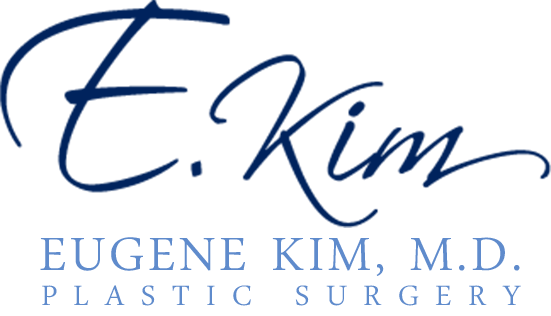 Breast augmentation is a popular cosmetic procedure that many women undergo to enhance the size and shape of their breasts. For active women who engage in sports or fitness activities, there may be concerns about how breast implants can impact their athletic performance. In this guide, we will explore the various aspects of breast augmentation and provide valuable information for active women considering this procedure. Board certified plastic surgeon Dr. Eugene Kim provides breast augmentation to patients in Beverly Hills, Los Angeles, Santa Monica, West Hollywood, CA, and surrounding communities.
Breast augmentation is a popular cosmetic procedure that many women undergo to enhance the size and shape of their breasts. For active women who engage in sports or fitness activities, there may be concerns about how breast implants can impact their athletic performance. In this guide, we will explore the various aspects of breast augmentation and provide valuable information for active women considering this procedure. Board certified plastic surgeon Dr. Eugene Kim provides breast augmentation to patients in Beverly Hills, Los Angeles, Santa Monica, West Hollywood, CA, and surrounding communities.
Understanding Breast Implants and Types
In the world of cosmetic enhancements, breast augmentation stands out for its ability to tailor aesthetics to personal desires, especially among women leading active lifestyles. Central to this customization are the two primary categories of breast implants: saline and silicone. Each type offers unique characteristics, catering to diverse preferences and considerations.
Saline implants, known for their sterile saltwater filling, present a safety feature in the event of a rupture; the body can naturally absorb the saline solution with minimal risk. This option allows for a flexible volume adjustment during surgery, giving the surgeon the ability to fine-tune the implant size for a balanced and natural look. The implant shell is inserted empty and filled once in place, which can require a smaller incision.
Silicone implants, on the other hand, are pre-filled with a cohesive silicone gel that closely mimics the feel of natural breast tissue. Many women and surgeons prefer silicone for its natural texture and consistency, which can be particularly appealing for those with less natural breast tissue. Despite the need for a slightly larger incision for insertion, the aesthetic and tactile benefits of silicone implants make them a popular choice.
The decision between saline and silicone implants involves more than just considering the look and feel; lifestyle, body type, and personal health considerations play significant roles. The impact of implant type on physical activities, the potential need for future revisions, and the individual’s comfort with the material inside their body are crucial discussions to have with a plastic surgeon.
Understanding the nuances between saline and silicone implants empowers women to make informed decisions aligned with their aesthetic goals and active lifestyles. Engaging in a thorough consultation with a certified plastic surgeon can illuminate the best path forward, ensuring that the choice of implant type enhances both appearance and physical well-being.
Breast Augmentation and Its Impact on Athletic Performance
The interplay between breast augmentation and athletic performance is a topic of interest for many active women considering the procedure. Concerns about the addition of breast implants possibly impairing physical abilities or altering the body’s dynamics during exercise are common. Yet, insights from both medical research and anecdotal evidence from athletes suggest that the effects of breast augmentation on performance are largely negligible.
For athletes, the primary consideration lies in the weight and placement of implants. While it’s true that breast implants add some weight to the body, the increase is typically minimal and rarely impedes physical performance. Proper placement of the implant, usually beneath the pectoral muscle, ensures stability and minimizes the risk of movement during vigorous activities. This submuscular placement not only offers a more natural appearance but also reduces the likelihood of interference with physical exertion.
Adaptations in training routines post-surgery may be necessary to accommodate the healing process, but long-term impacts on athleticism are generally not significant. In fact, many athletes find that their performance remains unchanged or even improves post-augmentation, possibly due to enhanced self-confidence and body image.
It’s crucial for individuals to have a candid discussion with their plastic surgeon about their athletic lifestyle and how breast augmentation might fit into this. Factors such as the choice between saline or silicone implants, the implant size, and the specific surgical techniques used can all be tailored to suit the needs of someone who leads an active lifestyle. A carefully planned procedure, taking into account the unique demands of an athlete’s body, can ensure that breast augmentation supports rather than detracts from athletic performance.
Moreover, engaging in a comprehensive pre-surgery consultation allows for setting realistic expectations about recovery timeframes and any temporary limitations on physical activity. With the right approach, athletes can enjoy the benefits of breast augmentation without compromising their performance or passion for sports.
Choosing the Right Size and Shape for Athleticism
Selecting the appropriate size and shape of breast implants is crucial for individuals who lead an active lifestyle, emphasizing the importance of finding a balance that does not compromise athletic performance. The ideal choice should align with one’s body dimensions and the intensity of physical activities regularly engaged in. A more compact implant size can facilitate ease of movement and minimize any potential hindrance during vigorous exercises or sports.
Consultation with a plastic surgeon should be comprehensive, involving detailed discussions about the prospective athlete’s daily activities and the specific demands of their sport. This dialogue is vital to determining the implant characteristics that would best fit an active regimen, allowing for a personalized approach to breast augmentation. Factors such as the implant’s projection, volume, and profile should be carefully considered in the context of physical activity to ensure that they contribute positively to the individual’s athleticism and overall body mechanics.
Moreover, the shape of the implant plays a significant role in achieving a natural look and feel that complements an athletic physique. Anatomically shaped implants, for instance, might be recommended for their ability to mimic the slope of natural breasts, offering a subtle enhancement that aligns with a toned body’s contours. Round implants, conversely, may provide a fuller appearance at the top of the breasts, which might be preferred by some but could require careful consideration of the implant size and placement to maintain athletic performance.
In essence, the decision-making process for implants in active individuals goes beyond aesthetic preferences, incorporating a strategic evaluation of how different sizes and shapes could influence or integrate with their dynamic lifestyle. Engaging in open, informed discussions with a surgeon who understands the nuances of combining athletic endeavors with cosmetic goals is instrumental in achieving outcomes that are both physically and aesthetically rewarding.
Recovery and Returning to Physical Activities
Post-operative care is a pivotal aspect of the breast augmentation journey, particularly for those who maintain an active lifestyle. The path to resuming exercise and sports is marked by patience and adherence to tailored recovery protocols. Initially, it is advisable to limit physical exertion, focusing instead on rest and recovery. Engaging in light walking as soon as it feels comfortable can aid circulation and promote healing, but more strenuous activities should be approached with caution.
During the first few weeks, high-impact exercises, heavy lifting, or any actions that strain the chest area are to be strictly avoided. These activities can not only cause discomfort but also potentially disrupt the healing process. Gradually reintroducing moderate activities is generally considered safe after receiving clearance from the surgical team, usually during the 4-6 week post-surgery mark.
It is important to listen intently to the body’s signals during this period. Any signs of pain, discomfort, or unusual symptoms should prompt an immediate consultation with the surgeon. Customizing the return to fitness routines is essential; modifications may be necessary to accommodate the new physical changes. For instance, incorporating a supportive sports bra can provide added comfort and support during workouts.
Reintegration into higher intensity exercises and sports should be undertaken with a measured and methodical approach. Incremental increases in activity intensity allow for the observation of how the body responds to each new challenge, ensuring that the implants do not interfere with physical performance. By following a thoughtful, physician-guided strategy, individuals can navigate their recovery efficiently, paving the way for a return to full athletic activity without compromising the well-being of their implants.
Long-Term Considerations for Athletes with Breast Implants
Maintaining the health and aesthetics of breast implants requires ongoing attention, especially for athletes who engage in regular, strenuous physical activity. Staying vigilant about any changes in the breast area, such as shifts in implant position or unusual discomfort, is crucial. Athletes should establish a routine of self-examinations and schedule regular assessments with their plastic surgeon to monitor the condition of their implants. This proactive approach allows for the early detection of any complications, such as implant rupture or capsular contracture, which might impact both health and athletic performance.
Athletic individuals must also be mindful of the potential need for implant revision over time. Factors like age, hormonal changes, and the physical demands placed on the body can all influence the longevity and appearance of breast implants. Understanding that revisions may be necessary to maintain desired results or comfort during physical activities is key to managing expectations and planning for the future.
Incorporating protective measures during sports and fitness routines can help preserve the integrity of breast implants. Wearing properly fitted sports bras that offer adequate support and minimize movement during exercise can protect the breasts from excessive impact and strain. Additionally, staying informed about advancements in implant technology and surgical techniques can provide opportunities for upgrades or adjustments that better suit one’s evolving athletic needs and preferences.
Engaging in open dialogue with healthcare professionals about one’s active lifestyle and how it intersects with breast implant maintenance ensures personalized care. By considering these long-term aspects, athletes with breast implants can enjoy their active lifestyles while ensuring their physical health and satisfaction with their cosmetic enhancements.
Contact the Office of Beverly Hills Plastic Surgeon Dr. Eugene Kim
Click here see more plastic surgery procedures and treatments performed by Board Certified Plastic Surgeon, Dr. Eugene Kim on patients in Beverly Hills, Los Angeles, West Hollywood, Santa Monica, CA and surrounding areas or call 310-271-6996 to schedule a consultation.
